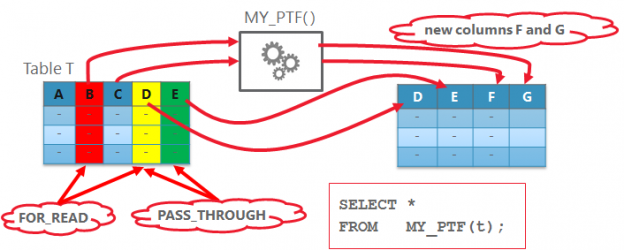A few days ago I received a comment/question on the older post about dynamically transposing rows to column with Polymorphic Table Functions (PTF). Back then I overlooked a bug in the example code, but the explanation takes a bit longer, so i decided to write a new post about it. The PTF was working initially but after inserting new data started to return wrong results – all NULL’s for some columns where we know there are actually values present. So, what’s going on?
Continue reading






